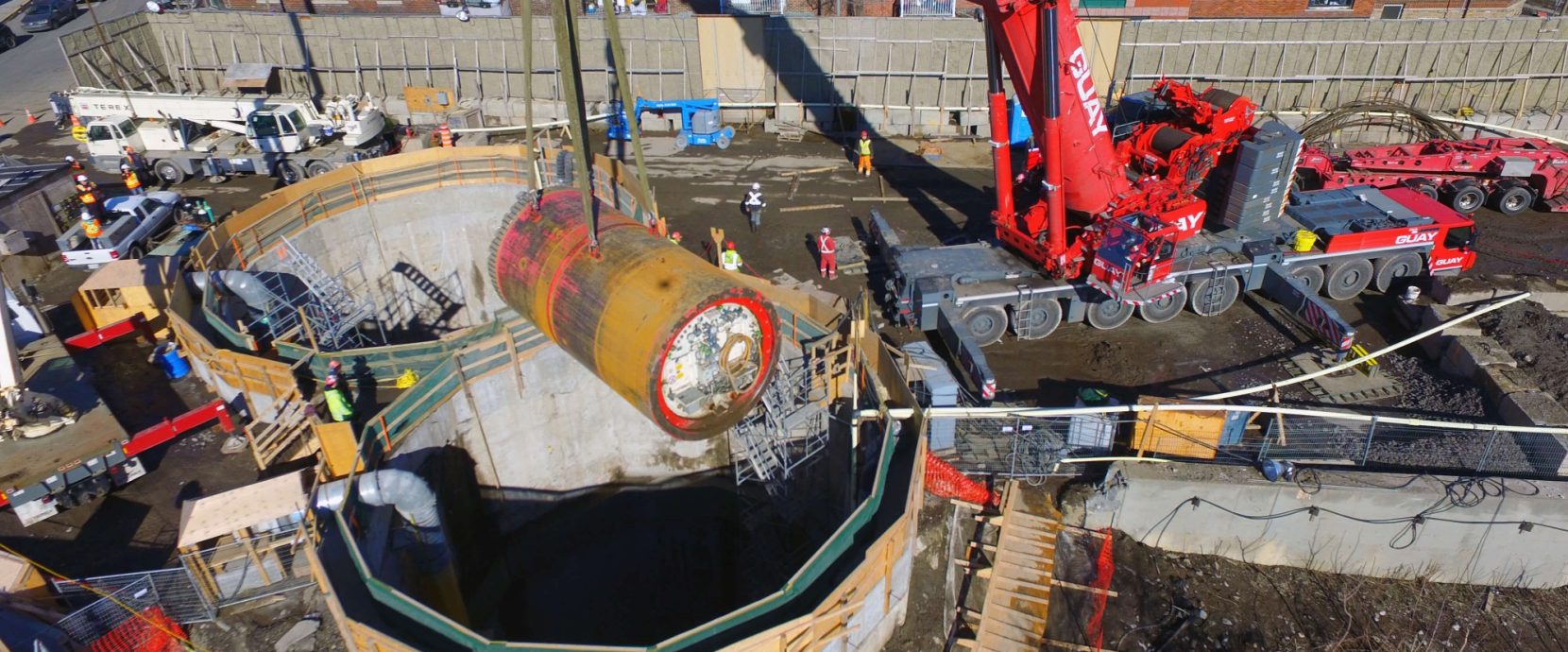The construction of the new Saint-Jacques viaduct required the diversion of part of the Saint-Pierre collector located under Saint-Jacques Street. The 3 m x 4 m (10 ft x 13 ft) horseshoe-shaped structure, built in 1930 and serving 140,000 homes, would have been jeopardized by the loads from the central pillar of the new St-Jacques viaduct. The connection of the diversion pipe and the extraction of the excavating TBM therefore required the construction of two well access shafts combined in an 8-shape, 43 m (141 ft) deep, entirely constructed with slurry walls.
The 28 panels of the 812 mm (32 in) thick, 3200 mm (126 in) long diaphragm wall are placed to create two 41.5 m (41 ft) diameter circular wells of which 2 panels are concomitant. The stability of the wall is based on the principle of a compression ring, no ties being used to ensure the stability of the wall.
The proximity of the edge of the Saint-Jacques hill embankment causes asymmetrical pressures on the wall, making the compression ring principle imperfect. The rigidity of the assembly of the panels forming the wells was evaluated and adjusted to compensate for these loads.




